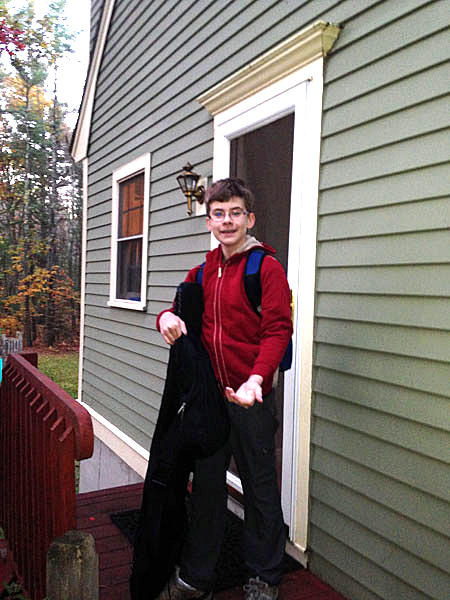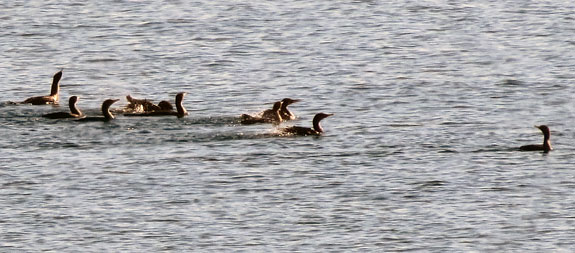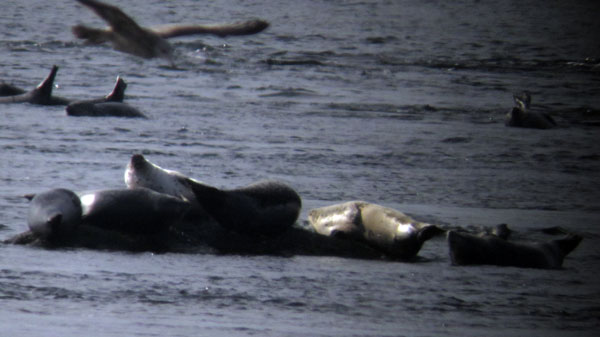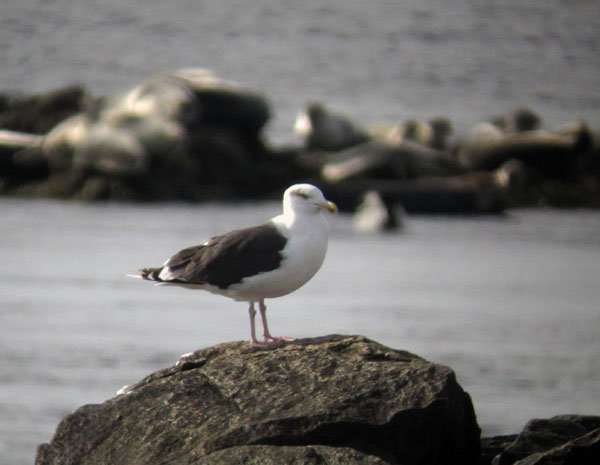We started Monday in Massachusetts by wishing grandson Mac a happy 13th birthday as he got ready for school. He was off to class and I was off to bird.
Penny and I travelled over to one of my favorite spots for birding with a dog — Salisbury Beach State Reservation, one of the state’s most popular ocean beaches, stretching 3.8 miles along the Atlantic Ocean. We got there about 8 AM and no one was on the beach — so Penny just took off, racing down to the water, running to and fro. Meanwhile, in a cool wind, I was scoping the ocean, hoping for Northern Gannets (which I never saw.)
Hundreds of Double-crested Cormorants were heading south in rather large gatherings, catching the northerly wind. Other groups, like the ones below, seemed to be heading south by swimming part of the way.
I spotted a number of Common Loons and four Red-necked Grebes, which were too far out for clear photos. People were starting to show up with dogs to exercise so I caught my anti-social Vizsla and headed to the boat ramp and an access point on the Merrimac River.
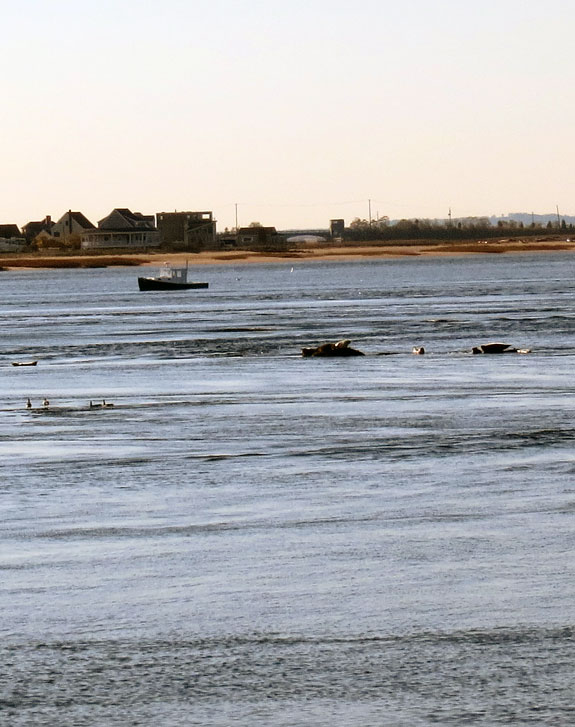
The Merrimack is a powerful tidal river with lots of fish and birds. This is looking southward to Plum Island. There are Harbor Seals and Brants as well as the boat.
This is the time of year that Harbor Seals hang out on the rocks and in the Merrimack. It’s fun to see them laying in chilly air, like sunbathers, and to see them float along like an inflated animal balloon.
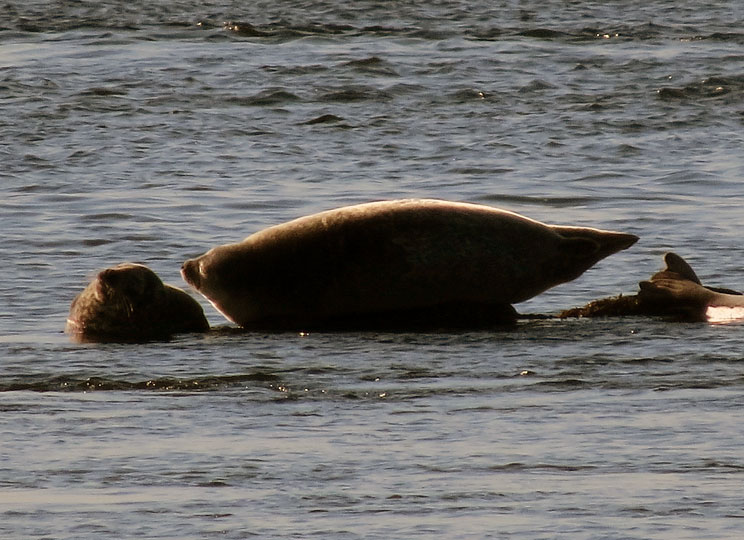
Harbor seals can be seen in and around the mouth of the Merrimack River during the fall and winter. You can read a short overview about harbor seals if you want to learn more about these interesting animals).
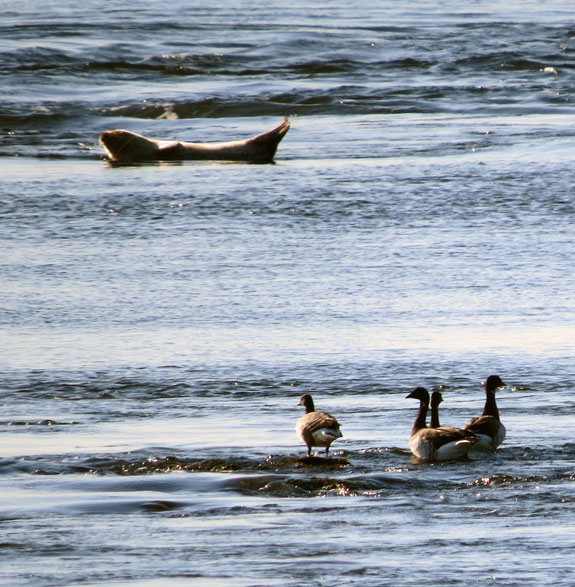
An abundant small goose of the ocean shores, the Brant breeds in the high Arctic tundra and winters along both coasts. Note the Harbor Seal coasting by on its back.
With some shorebirds, a bunch of Northern Mockingbirds, and three aerobatic Northern Harriers as part of the morning’s sightings, it was another good outing at Salisbury. Both Penny and I were ready for some refreshment and rest.

